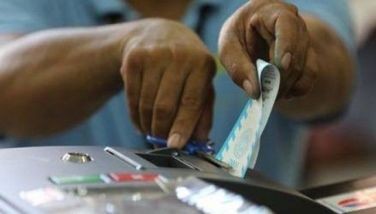What the world doesn't know about COVID-19

MANILA, Philippines (Update 2: Feb. 13, 2020; 5:50 p.m.) — The World Health Organization this week held a two-day global research and development forum to advance international efforts and knowledge on the COVID-19 outbreak.
Major research funders and over 300 scientists and researchers from different disciplines convened to identify knowledge gaps and outline what is needed to respond to the newly discovered strain of coronavirus.
The research would allow them to develop vaccines, therapeutics, diagnostics and other innovations called for as the epidemic progresses.
RELATED: WHO to hold forum to boost international efforts vs nCoV
In his opening remarks, WHO Director-General Dr. Tedros Adhanom Ghebreyesus highlighted global cooperation in the face of disease.
“This outbreak is testing us in many ways,” the health authority said.
“It’s a test of political solidarity – whether the world can come together to fight a common enemy that does not respect borders or ideologies...financial solidarity – whether the world will invest now in fighting this outbreak, or pay more later to deal with its consequences. And it’s a test of scientific solidarity – will the world come together to find shared answers to shared problems?”
He then admitted that much remains unknown about the virus, calling for the collective knowledge, insight and experience of attendees to find answers and possibly identify more questions.
The topics discussed by the participants include:
- The natural history of COVID-19, its transmission and diagnosis
- Animal and environmental research on the origin of the virus (including management measures at the human-animal interface)
- Epidemiological studies
- Clinical characterization and management of disease caused by the virus
- Infection prevention and control, including best ways to protect health care workers
- Research and development for candidate therapeutics and vaccines
- Ethical considerations for research
- Integration of social sciences into the outbreak response
Here are just some of the unanswered questions so far about COVID-19.
What are the reservoirs?
“The source is still unknown (most likely an animal reservoir) and the extent of human-to-human transmission is still not clear,” WHO said in a January 23 statement.
The Centers for Disease Control and Prevention defines reservoirs as the habitat in which an infectious agent (virus, bacterium, parasite, or other microbes) normally lives, grows and multiples.
Reservoirs include humans, animals and the environment.
“[B]ut when we compare the genetic sequence of this new virus with all other known coronaviruses, all of its closest relatives have origins in mammals, specifically bats. Therefore, without further details on testing of animals in the markets, it looks like we are no closer to knowing this virus’ natural reservoir,” EcoHealth Alliance said in a January 23 release.
What are the transmission dynamics?
A January 29 study published in the New England Journal of Medicine analyzed data on the first 425 confirmed cases of novel coronavirus infected pneumonia in Wuhan.
The median age among the sample is 59 years and the majority are male. The majority of cases with onset before the start of 2020 were linked to the Huanan Seafood Wholesale Market.
The average incubation period, or the time between exposure to infection and observation of symptoms, was 5.2 days.
Varying incubation periods have also been estimated by WHO (2 to 10 days) and CDC (2 to 14 days).
“Our preliminary estimate of the incubation period distribution provides important evidence to support a 14-day medical observation period or quarantine for exposed persons. Our estimate was based on information from 10 cases and is somewhat imprecise; it would be important for further studies to provide more information on this distribution,” read the article.
“Our study suffers from the usual limitations of initial investigations of infections with an emerging novel pathogen, particularly during the earliest phase when little is known about any aspect of the outbreak and there is a lack of diagnostic reagents.”
What is the period of infectiousness?
“Understanding the time when infected patients may transmit the virus to others is critical for control efforts,” WHO said in a January 27 report.
“Detailed epidemiological information from more people infected is needed to determine the infectious period of [COVID-19], in particular, whether transmission can occur from asymptomatic individuals or during the incubation period.”
A January 30 study in the New England Journal of Medicine observed the transmission of the virus from an asymptomatic person infected with COVID-19 in Germany.
“[I]t is notable that the infection appears to have been transmitted during the incubation period of the index patient, in whom the illness was brief and nonspecific... The fact that asymptomatic persons are potential sources of [COVID-19] infection may warrant a reassessment of transmission dynamics of the current outbreak,” reads the report.
Public health questions
According to the WHO Director-General, priorities formulated by experts and R&D funders include applying diagnostics, best practices for infection prevention, potential therapies available, existing vaccine candidates, and addressing the "infodemic."
He also raised the following questions in dealing with COVID-19 from the lens of health care.
- Which samples should be used for diagnosis and monitoring of treatment?
- What is the best way to manage cases of severe disease?
- What ethical issues do we need to be aware of in the way we do our research?
“To defeat this outbreak, we need answers to all those questions, and more,” Ghebreyesus said.
“There are also tools we don’t have. We have no vaccine to prevent infections, and no proven therapeutics to treat them.”
According to the organization's latest situational report, there are at least 45,171 confirmed global infections of COVID-19. Almost all of the cases are in China (99.02%).
There are also 441 confirmed cases in 24 other countries with the first death outside of China recorded in the Philippines.
WHO on the last day of January declared the novel coronavirus outbreak as a Public Health Emergency of International Concern.
- Latest
- Trending




























